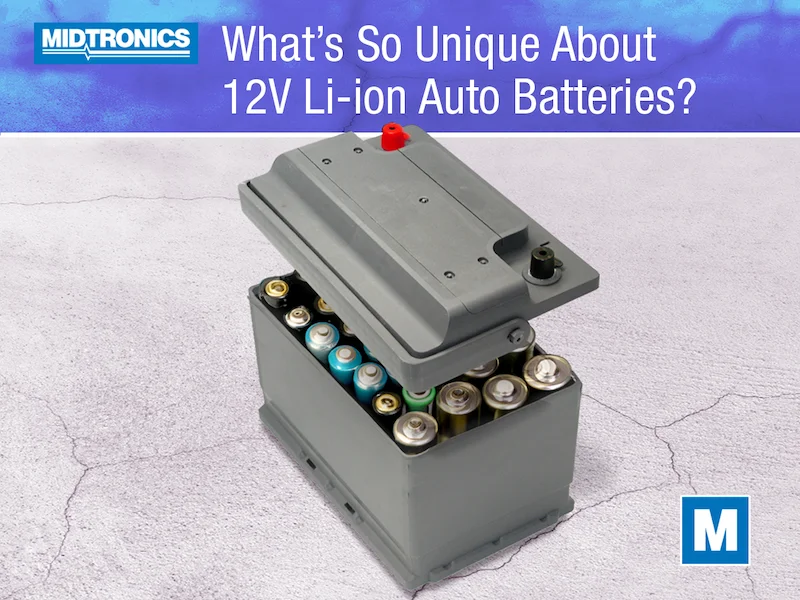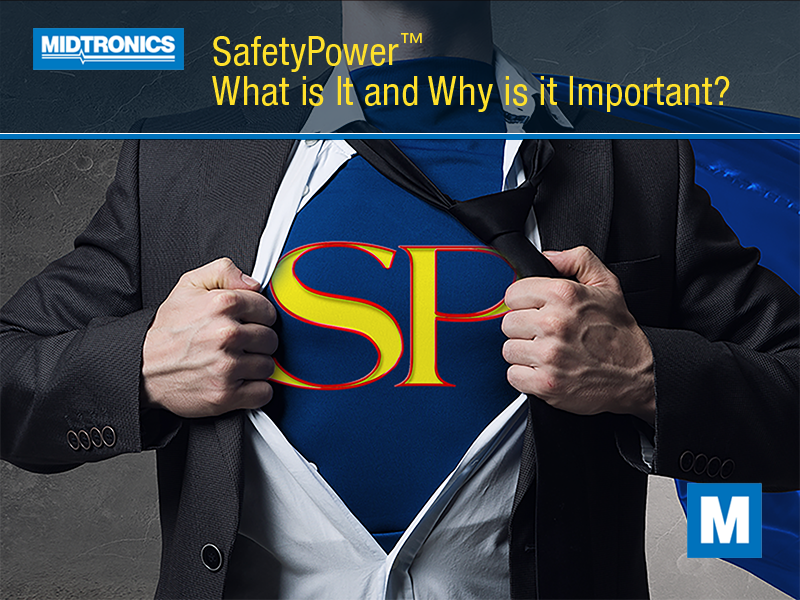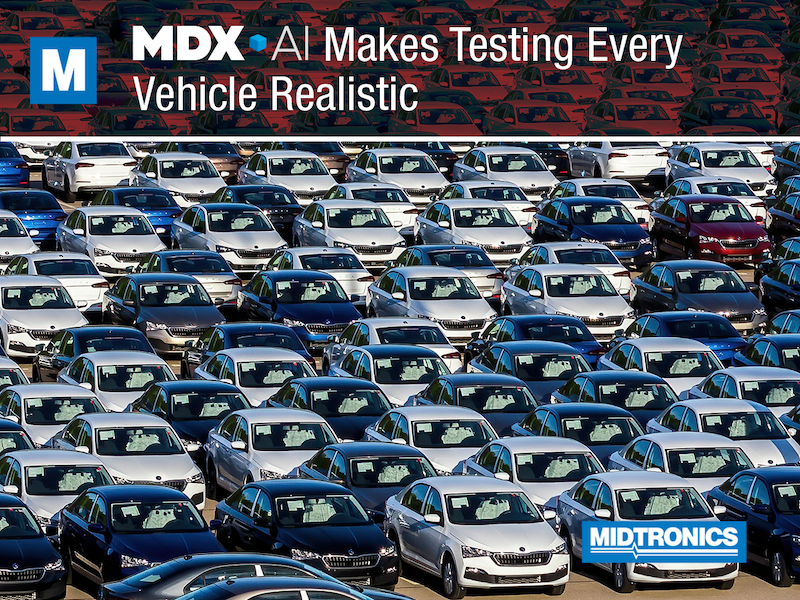If you’re looking at electric vehicles, lithium-ion is a common chemistry that you’ll run into for the high-voltage battery pack. But it’s becoming more common to find this type of battery for 12-volt applications, not only for Safety Power Capacity systems in EVs but for internal combustion engine vehicles too. With decades of development in automotive batteries using lead-acid technology, why is there a fast-emerging presence for a 12V Li-ion battery?
Let’s explore the reasons that Li-ion has become a more prevalent battery product, the differences of lead-acid vs Li-ion, what applications it’s for, and the unique needs it has for servicing.
How 12V Li-ion Batteries are Designed
If you were to cut open a handful of 12-volt Li-ion batteries from different manufacturers, you’d find a surprising number of differences in the design. However, they all contain some common features.
Individual cells contain the components that any Li-ion battery has. There’s an anode, cathode, separator, electrolyte, and a positive and negative terminal for each. The ions flow from the anode to cathode when the battery is discharging, and the opposite occurs when it’s charging again. This is the most understandable part of the design as it mimics every other battery’s design too.
However, the cells don’t always contain the same amount of energy from manufacturer to manufacturer. So, a number of them are stacked together and their terminals fastened together in series to create the 12 or so volts the vehicle needs to operate.
A battery management system, or BMS, is also included with a Li-ion battery, monitoring and regulating its operation. Then, the positive and negative circuits are wired to terminals on the case. It’s all sealed within the same polypropylene case material you’re familiar with, padded on all sides internally to keep the battery pack secure and protected.
Of course, the chemistry is a main difference between lead-acid and Li-ion batteries. The lead dioxide and sponge lead materials that a lead-acid battery uses are absent, and lithium-based compounds like lithium cobalt oxide and lithium iron phosphate are used. But the other big differences is the number of cells. Lead-acid batteries always contain six cells, each of approximately 2.1 volts. The number of cells can vary for Li-ion batteries, as long as the combined total is 12.6 volts.
Why is Li-ion Being Used?
Unlike the conventional lead-acid batteries, which have been the industry standard for decades, Li-ion batteries offer a fresh perspective on automotive power storage.
One of the most significant advantages of Li-ion batteries is their compact and lightweight design. This makes them an excellent choice for modern vehicles where space and weight are crucial considerations. Think high-performance and luxury cars here. In comparison to lead-acid batteries, Li-ion batteries are significantly smaller and lighter, without sacrificing performance.
Li-ion batteries also have a much higher energy density than lead-acid batteries so they can store more energy in a smaller space, making them ideal for applications where size is a limiting factor. The increased energy density also results in longer-lasting power, a valuable feature for various automotive applications.
When you need a much quicker charge and discharge rate, Li-ion is far superior compared to lead-acid batteries. This fast response time is particularly important in vehicles where quick bursts of power are required, such as in start-stop systems and regenerative braking.
Unlike lead-acid batteries that require periodic checks and maintenance, Li-ion batteries can operate for years without any maintenance. This feature contributes to the convenience and cost-effectiveness of Li-ion technology, even though they’re several times the cost for the same capacity.
You’ll also find that 12V Li-ion batteries are designed to have a longer lifespan than traditional lead-acid batteries. They are built to withstand the rigors of the automotive environment, offering reliable performance throughout their lifespan.
Applications For Li-ion Technology
Where will you find 12V Li-ion batteries in the real world? It’s more common than you might think:
- Start-stop systems – Li-ion batteries are commonly used in start-stop systems, where they provide the quick bursts of power required to restart the engine efficiently.
- Extreme lighting and accessories – Li-ion batteries can power vehicles with lighting systems, infotainment systems, and various accessories that go beyond the norm, ensuring reliable performance.
- Regenerative braking – In hybrid and electric vehicles, Li-ion batteries can better store the energy captured during regenerative braking, improving overall efficiency.
- Safety Power Capacity – Li-ion batteries are essential for safety power capacity systems in electric vehicles, providing the power needed to operate critical safety features in case of an accident or malfunction.
Again, these features are found more often in premium models from luxury carmakers, as well as in hybrid and fully electric models. But that isn’t necessarily exclusive, and it’s possible Li-ion could become even more widely used in the industry.
Service Needs for Li-ion Batteries
Servicing 12V Li-ion batteries in the automotive industry requires specific knowledge and tools to ensure their long-term reliability and safety. To maintain optimal battery performance, it’s essential to follow the guidelines for charging and discharging. Avoiding overcharging and deep discharging can extend the battery’s lifespan.
And due to the environmental concerns associated with Li-ion batteries, proper recycling and disposal procedures are vital. Technicians should be trained in handling these processes to minimize the environmental impact.
Not just any battery tester is sufficient to check the health of a Li-ion battery either. Specialized diagnostic equipment is necessary so technicians can assess the condition of the Li-ion battery, identify potential issues, and take appropriate actions to prevent failures.
The emergence of 12V Li-ion batteries in the automotive industry is driven by their superior performance, efficiency, and environmental benefits. These batteries are revolutionizing vehicle safety and dependability, and they’re certainly helping to reduce instances of the most common breakdown, which is a dead battery.
But service shops should be equipped with the knowledge to identify models with Li-ion batteries so the correct testing procedure can be performed with equipment designed to accurately and completely check its health. That might require procuring diagnostic solutions like MDX-AI, capable of servicing a complete automotive range.




